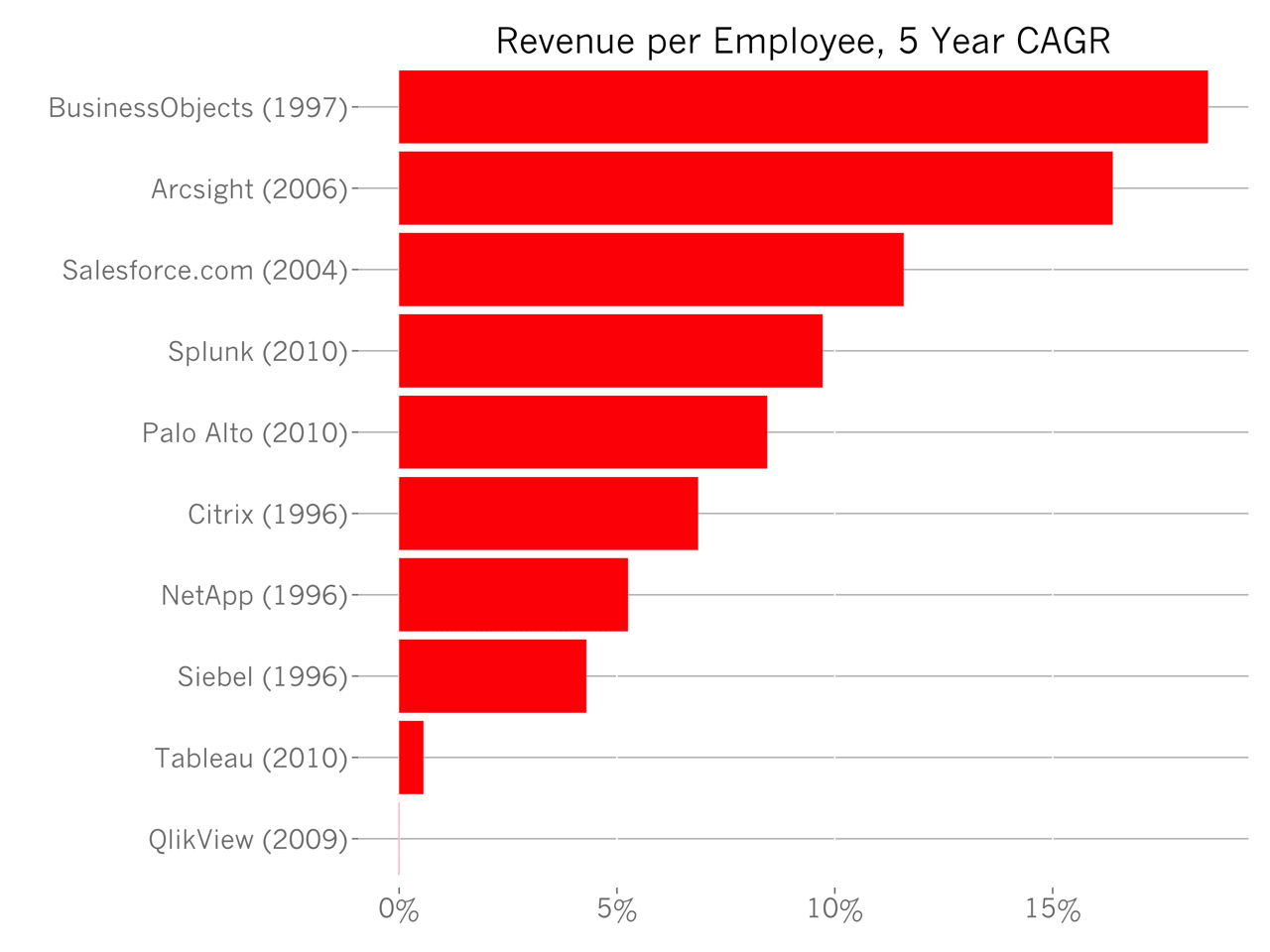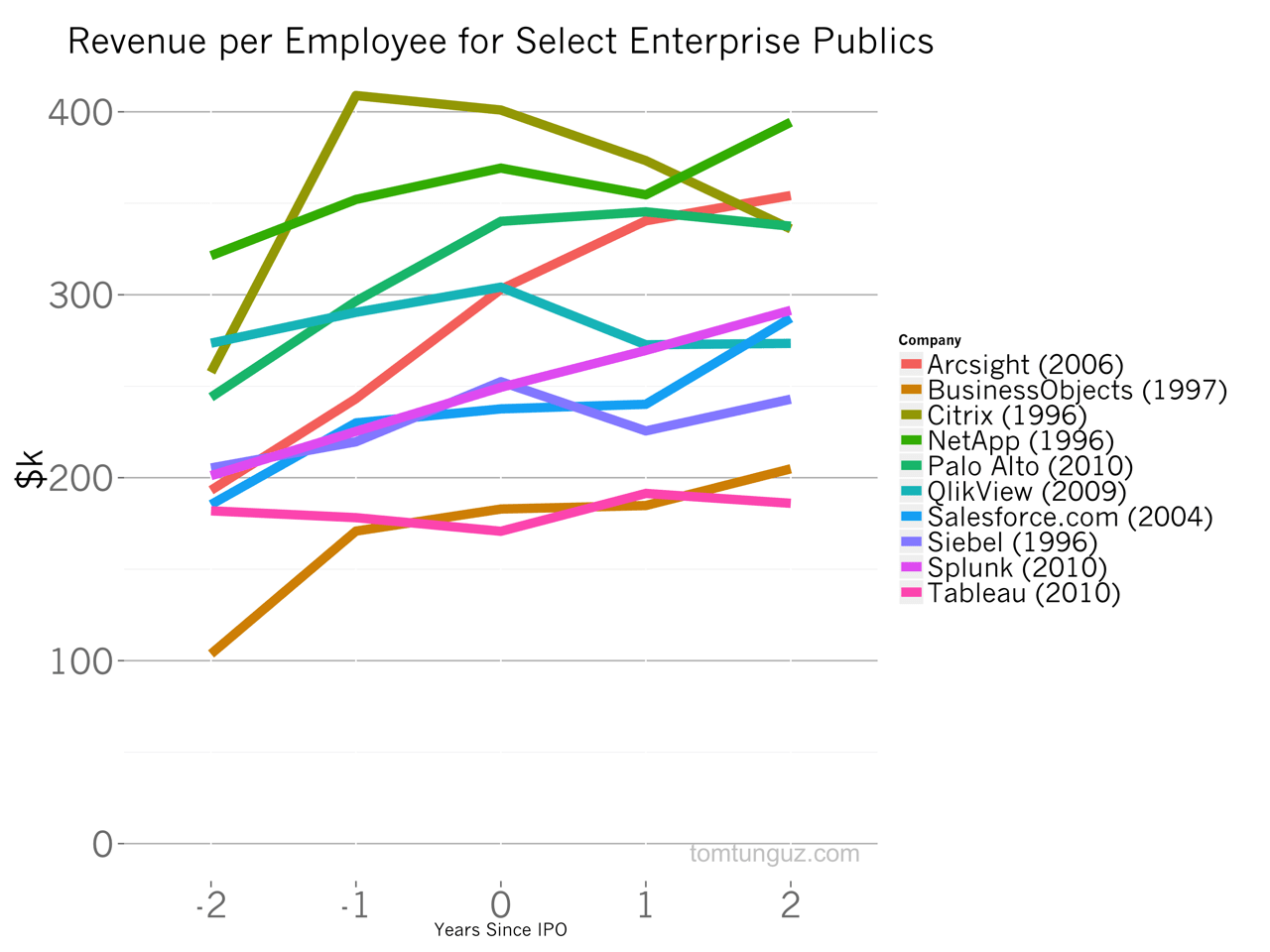
In the past, we have benchmarked the revenue per employee of large publicly traded SaaS companies and determined that the average is about $200k of revenue per person. But, that analysis examined revenue per employee that only one point in time.
As Jesse Hulsing pointed out to me, examining this figure over five years reveals quite a bit about the health of the business. Jesse was kind enough to provide data on a handful of category defining enterprise companies, which I’ve used in this analysis.
High-growth companies scale their teams very quickly. In fact, the companies in the sample set grew their teams by 56% annually over five years, which nets out to about 8.5x growth, from 204 employees to 1750 employees on the median.
Despite the massive growth of these organizations, the best companies are able to maintain or even accelerate their revenue per employee. In fact, increases in revenue per employee as a company scales is an incredibly positive sign of the health of the business. It indicates that the company is achieving economies of scale. Those economies of scale may exist as a consequence of a strong brand, monopoly-like characteristics within their market segment, improving sales efficiency, increases in contract size, better rates of customer upsells, etc. But in all cases, it’s a hallmark of a company whose economics are improving with time.
In the chart above, Business Objects, a business intelligence company, sets the benchmark. It’s the fastest revenue per employee growth, recording 18.6% over the five year period. At the bottom of the list, Tableau and QlikTech, two other business intelligence companies, have maintained their revenue per employee despite their high growth.
All the companies on this list are exceptional because on the median, they have grown their revenues 77% per year for five years, while maintaining or growing their revenue per employee.
A potentially unhealthy business would see revenue per employee contraction over time, meaning the business becomes less efficient with scale.

Looking at these trends on an annual basis, we can see that for nearly all the companies in the sample set, revenue per employee has been steadily increasing.
Revenue per employee is a lagging indicator of success. Only after the company has hired and grown their team, can they understand the marginal impact of additional people on their revenue results. But it serves as a great longitudinal measuring stick to understand the increasing or decreasing efficiency of the business.